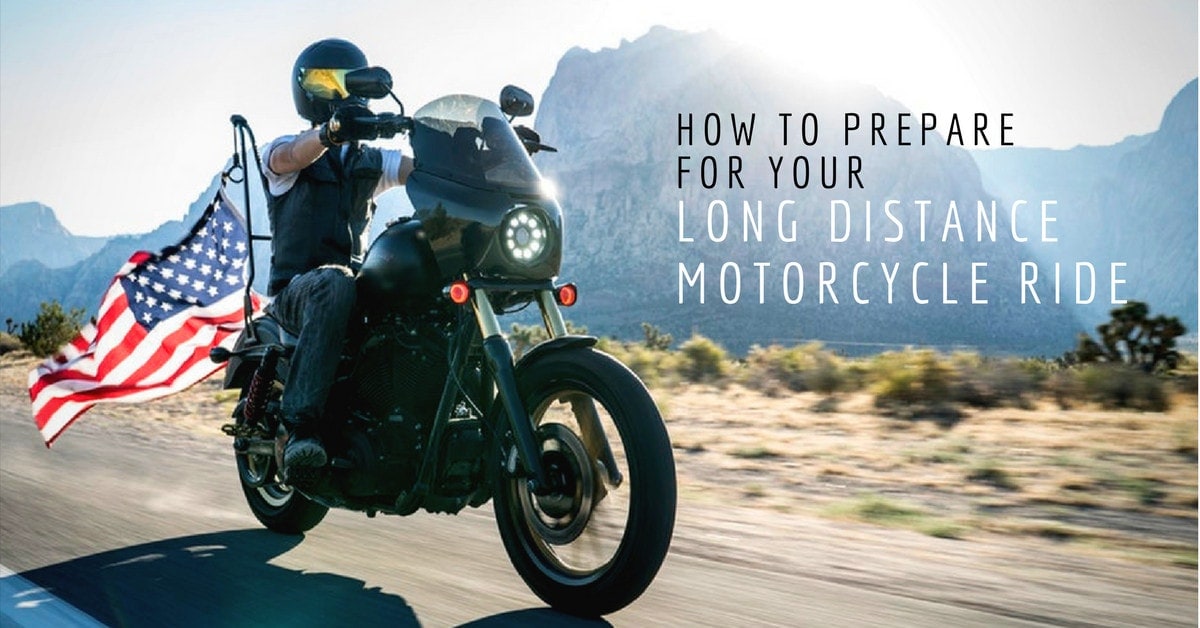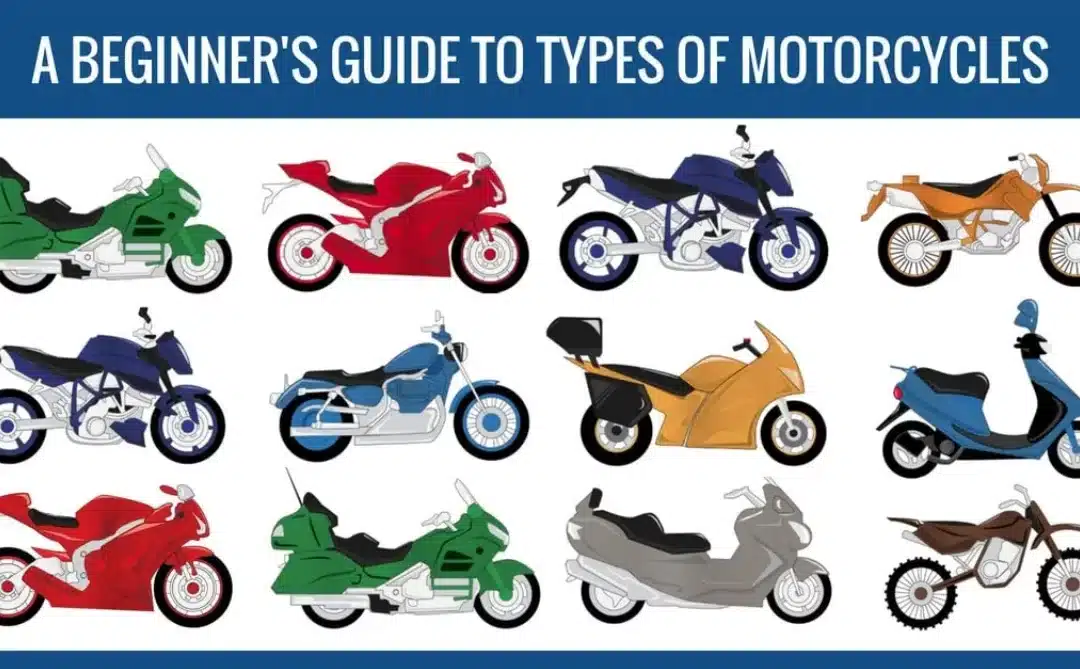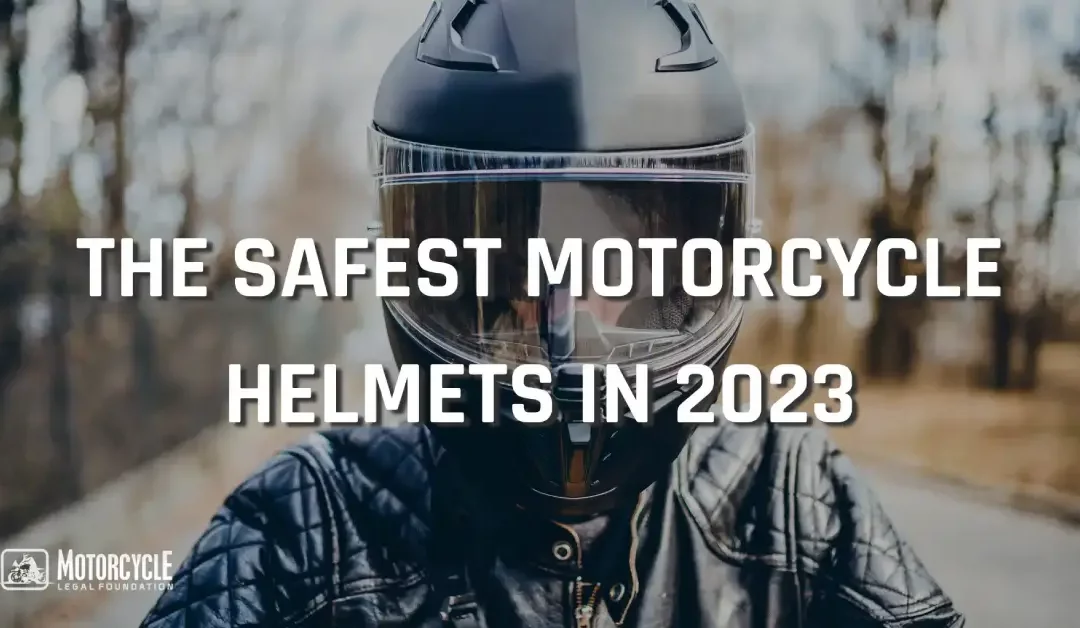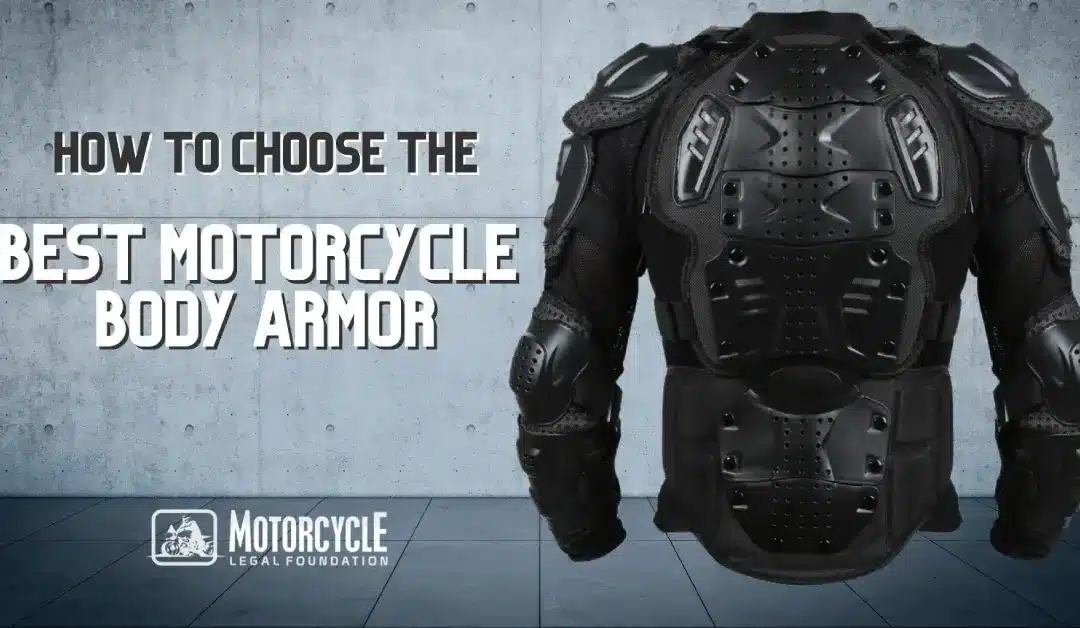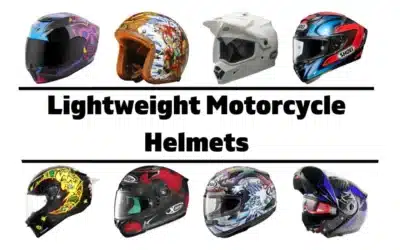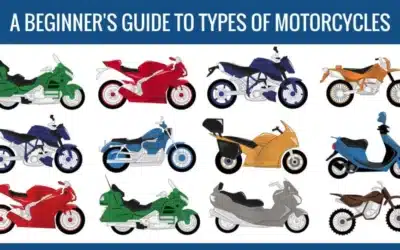If your passion is seeing the world on your motorcycle, or the circumstances force you, eventually you may need to learn everything there is to know about long distance motorcycle riding.
Humans are competitive; we enjoy mental and physical challenges. If you’ve never ridden cross-country, seen the sites, and found the best-hidden diners along the way, you’ve never experienced an extreme endurance ride like the Iron Butt Challenge. It’s a grueling ride starting at 1,000 miles minimum in 24 hours.
With rallies hosted on almost every continent on Earth, if you want to see the world from a motorcycle literally, you can. Whether riding through continents or cruising through the backcountry across your state, long-distance motorcycle riding is a truly unique experience that everyone should experience at least once in their lifetime.
Before you buy your plane tickets, organize shipping to a faraway destination, or spontaneously hop onto your bike and cruise, some preparation is involved. Here we will provide you with a complete guide to make this the experience of a lifetime.
Need Motorcycle Insurance?
Enjoy your ride while feeling safe with the best insurance coverage.
Preparation Before the Ride
Before you embark on your motorcycle long-distance journey, prepare yourself and your ride with these tips!
Choose the Right Motorcycle
With so many styles available, some motorcycles are better suited for long-distance rides. The riding position, cargo potions, and windscreen coverage are all amenities that will make a significant difference in your journey. These are our recommendations on the type of motorcycles you should choose.
- Touring Motorcycles As our top contender, touring motorcycles are designed for long journeys that involve hours of sitting and riding. They typically have a more upright riding position that won’t put a lot of strain on your back to hold yourself up while seated. Cargo is usually maximized with saddlebags, a trunk area, and extra pockets for smaller items. The windscreen and front fairing are large to move air around you as you cruise, so you won’t need to fight the wind.
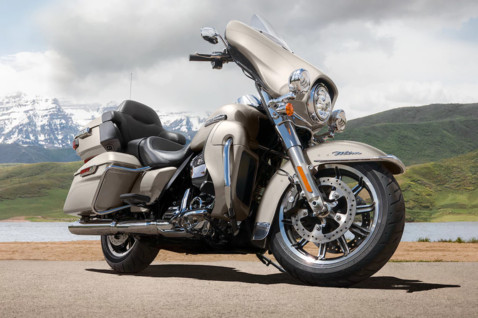
- The Honda GoldWing and the Harley Davidson Electra Glide are two very popular options if you’re looking for a new or used motorcycle for touring. It’s not uncommon to see them with 100,000 miles on the odometer!
- The Kawasaki Concours14 is a sport-touring motorcycle with slightly more aggressive ergonomics than a normal touring model. It has a 1,352cc engine with anti-lock brakes that will easily cover hundreds of miles in a day.
- The Can-Am Spyder is a three-wheeled motorcycle with three model levels. The Spyder F3 Touring model features a high-performance braking system and a full front fairing for maximum wind deflection.
Cruiser and Standard Motorcycles
Cruiser and standard motorcycles are also comfortable options, as they both have a lower, relaxed seating position that is good for long rides. However, one of the features that they typically lack is a large front fairing to completely deflect the wind around you. Although they have storage options such as saddlebags, tank bags, or a front pouch, they don’t generally offer trunk storage like a touring motorcycle.
Adventure or Dual-Sport Motorcycle
If you’re planning a mixed ride of asphalt and dirt, you may want to look at an adventure or dual-sport motorcycle. They offer excellent ergonomics that won’t put a lot of strain on your back and wrists, plus a fair amount of wind protection. They can be easily upgraded with added luggage for additional storage space.
Sport Motorcycle
Sport motorcycles are one of the least enjoyable bikes for long-distance riding due to the forward-leaning position required. They are designed for a low, sleek riding position and crouched posture to make them more aerodynamic and built for turning at speed. Many people have made long journeys on sports motorcycles, so do not entirely count them as an option. Try one on a shorter-distance ride and see what you think before committing to a long journey.
Gear Up with New Arrivals
Cooler days are coming. Big savings on high-end motorcycle apparel.
The Perfect Engine for a Long-Distance Ride
Engine size on a motorcycle isn’t a guarantee that you’ve selected the best motorcycle for your long-distance journey, but it can affect them.
- Under 750cc – Depending on the style of motorcycle, 750cc is a suitable engine size to ride long distances with. A 750cc standard or cruiser may be a perfect fit for a daily commute and an occasional longer ride. Something smaller, like a 250cc, is suited best for a daily commuter; although it’s fuel-efficient, it can struggle at highway speeds. A 750cc sports bike should be able to do it all: capable of riding around town with efficient mileage and easy maneuverability, but also able to cruise at highway speeds for long periods without an issue.
- Over 750cc – Over 750cc is also well-suited for a daily commuter, but it shines when cruising at highway speeds. Large enough for a long, comfortable journey, a larger engine can be fit inside a larger motorcycle that can carry added weight and offer extra storage options.
Proper Motorcycle Maintenance is A Must
- If you’ve ever broken down around town, you know how much of a pain it is to leave your motorcycle or have someone come pick you up with a pickup or trailer. Now imagine that scenario when you’re 800 miles from home in a strange town or stuck on a busy highway — not very enjoyable. Conducting proper maintenance on your motorcycle before you leave is necessary, as it will allow you to make any repairs or get ahead of maintenance items that may need to be done at a specific mileage. Worn tires, worn or stuck cables, and old brake pads are all things that contribute to added risk for your next ride. Your motorcycle is your investment, so take care of it!
Specialized Gear
You’ll need the proper motorcycle gear to ensure long-distance motorcycle riding doesn’t become tiresome. Beyond all-weather protective gear, some different options in the aftermarket may make your ride more enjoyable:
Heated grips
These are a good option if you plan to ride in the early morning or late evening, as they will add some heat to keep your hands warm when the surrounding temperatures become a little chilly.

Padded grips
Padded grips provide extra cushion for your hands and wrists, preventing wrist pain and tightness when gripping your bike for hours.
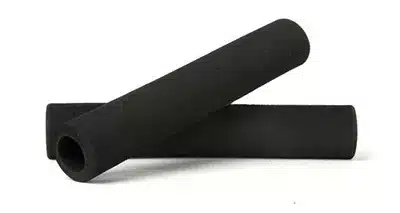
Gel seat(s)
OEM seats are fine for a good ride, but they don’t have the extra seat support that a gel seat can offer. If you don’t have a gel seat offering, you can always contact an upholstery shop to custom-make a seat.
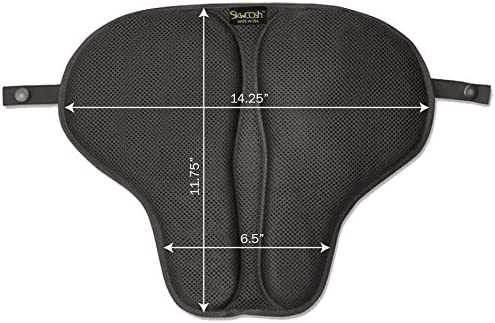
Backrest
A backrest for you and a passenger can add extra support to lean back as you ride. They mount to your seat, and they even have gel options to couple with your gel seat.
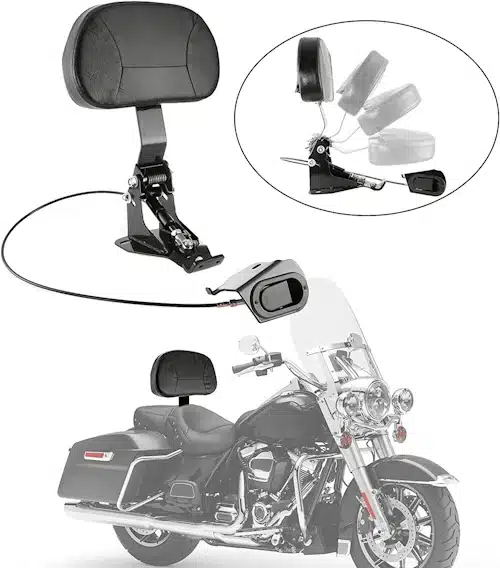
Cruise / Throttle Control
Some grips offer a throttle lock that will help cruise the throttle and not require you to squeeze your hand around the it continually. . You can still ride with your hand on the controls for safety but not have to squeeze the grip to keep the throttle in a certain place.
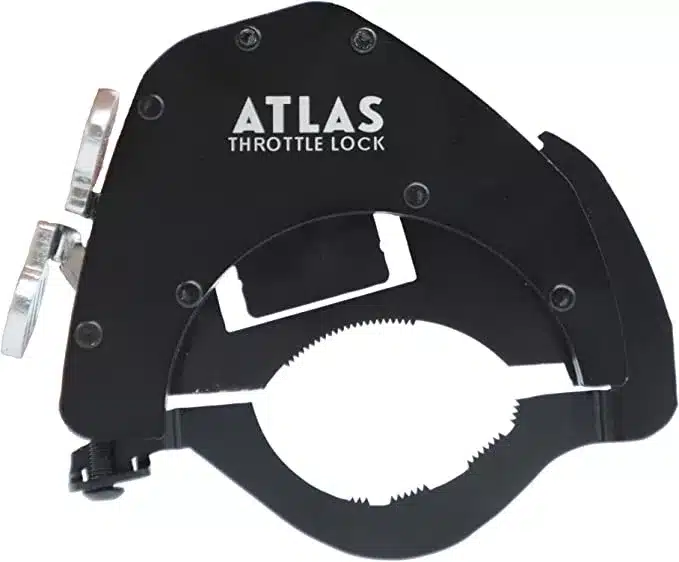
Storage may also be useful for carrying all your belongings. These are the most common and practical storage options for your motorcycle:
Tank Bags
Tank bags typically fasten to the top of your fuel tank with straps or magnets. They are great for items used more frequently than others (rain suits, identification, etc.). It also can have a clear pouch in which you can store a map to review as you ride and stop for a break.
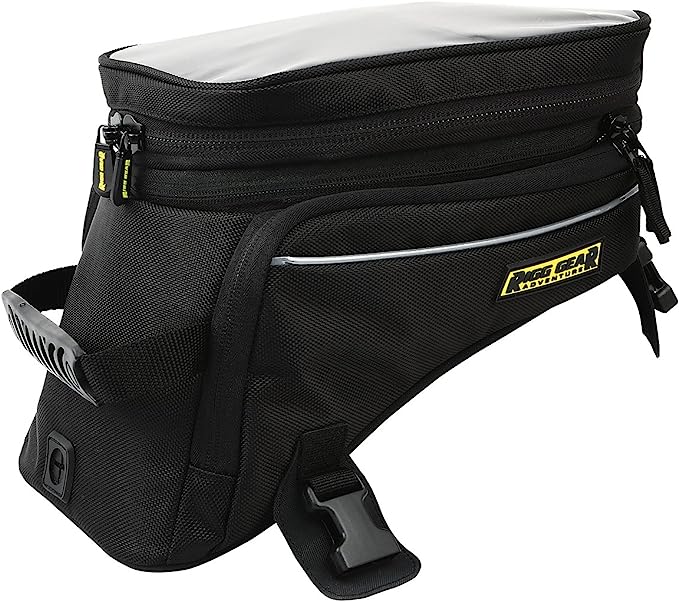
Saddlebags
Saddlebags can also be fastened to the motorcycle with straps or have a rigid mounting structure for the larger sets. They fit on either side of the rear wheel and offer extra storage for gear. Offerings include hard or soft materials from fiberglass, canvas, and leather.
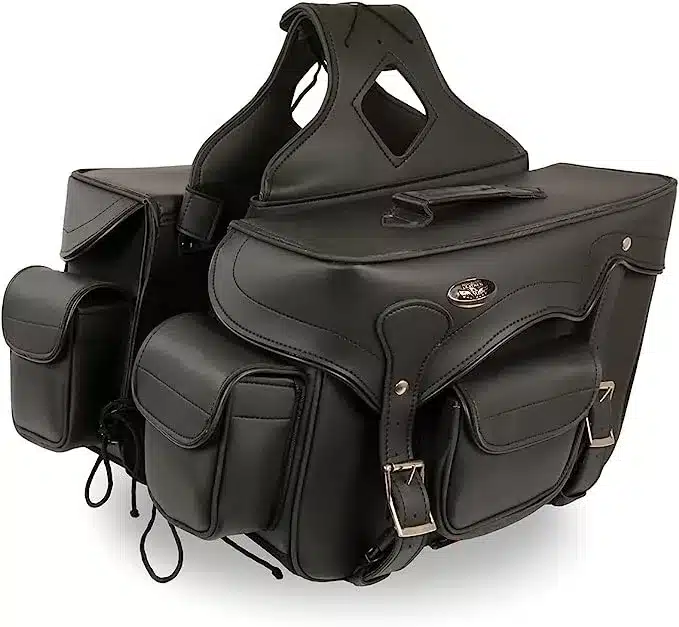
Trunk/ Tail Bags
Trunk/tail bags can replace the rear seat or have a structure that holds the storage compartment over the rear wheel. They provide an abundance of extra storage and can typically hold a full-face helmet, a small pet, and lots more.
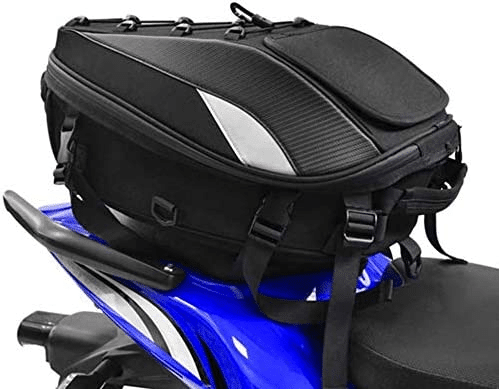
Pet Carrier Bags
Your best friend can join you on your long-distance adventure! There are several choices available if you need to travel with your pet. However, it is crucial to always prioritize the wellbeing of your pet; if traveling distresses your pet in any way, please refrain from taking it with you.
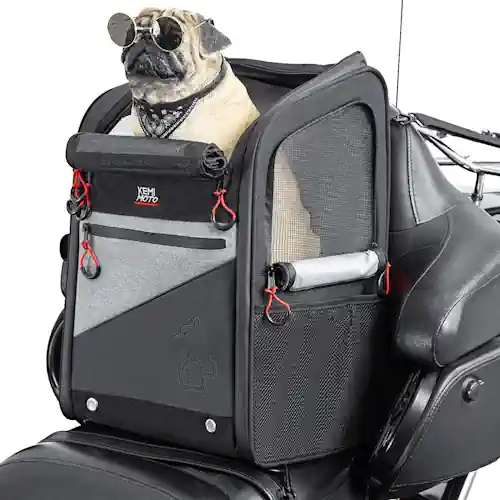
Riding Posture
Think of all the chairs you’ve sat on. A bar stool, a recliner, an office chair, etc. Which offers comfort for 10 minutes versus 2 hours? Which can you quickly react from? A bar stool provides a quick reaction but isn’t comfortable for 2 hours. A laid-back recliner offers excellent comfort but slow reaction times. Your motorcycle posture should offer both support and quick reaction ability for control. When you’re riding for long hours, sit in a neutral position to keep your muscles loose and ready to react until you stop for a break to stretch. Your handlebars should ideally position your hands between your stomach and shoulders, roughly midway, and your arms should have a slight droop. Anything too low and too high puts stress on your muscles and joints, leading to premature fatigue.
Plan Your Route
GPS/Maps
Know your end destination and map to it via GPS or the old-fashion paper map. Decide how long it will take to get there, whether within a few hours or days. This requires thinking and planning, as there can be many routes to journey on. Do you want to get there quickly on the interstate? Or do you opt for the scenic route and check out the World’s Biggest Ball of Yarn? Perhaps there is this famous diner in the backroads that you’ve wanted to try?
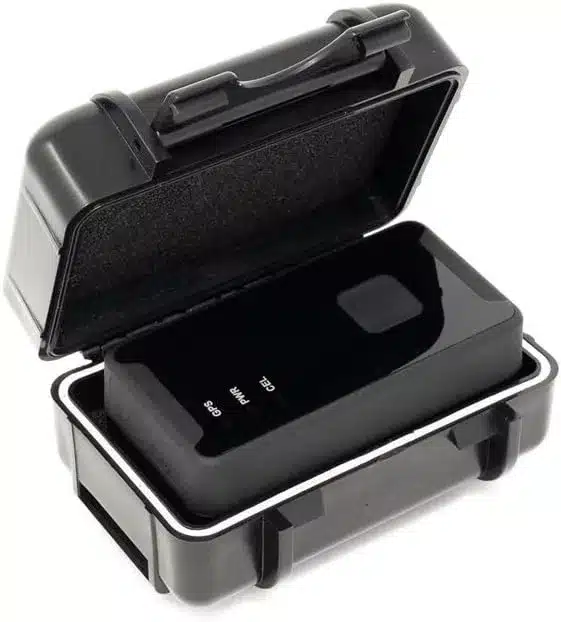
Climate – Be aware of the climate when riding so you can pack accordingly. Are you going to ride at night, which might require cooler weather gear? Or are you riding in the Spring with erratic rain showers? Perhaps it’s a long summer day of sunshine? Topography over mountain passes can change from hot to cool in a matter of minutes, so be prepared for the evolving temperatures.
Obstacles – The warm weather that is great for riding can also be great for construction. Are any parts of your travels obstructed by construction zones that may cause a delay or a detour? Most states have a website that is continuously updated for road conditions and traffic delays.
Accommodations – If you plan to stay overnight during your trip, plan ahead, and have your accommodations booked before you leave. You don’t want to ride into a town and realize the big championship game has every hotel in town booked solid. Planning also gives you a target goal to achieve and look forward to every day.
Fuel Stops – You should know how far you can ride on a full tank of fuel, and with that information, you can plan out your fuel stops ahead of time. Larger motorcycles may have larger fuel tanks that can run up to 500 miles at cruising speeds. Decide if you want to run through a complete tank, or stop at the half tank for a break to refuel and stretch.
Riding Distance – Be realistic with your destination. Riding while fatigued because you had committed to the end-of-day destination can be exhausting and dangerous. Plan your routes and distances accordingly, so you don’t have to scramble to stay awake and keep going each night.
Training For Your Journey
- You don’t run a marathon without preparing for it, and so you shouldn’t try to ride long distances without preparation either. Riding for an extended period continuously requires muscle movement and quick mental faculties to deal with the changing landscape. Consider an exercise routine focused on building muscle endurance (less weight and more repetitions for less muscle fatigue.)
- Ride on your time off to build up your endurance and stamina for your trip ahead. Your body can provide you feedback on the trip, whether it’s through the aches and pains indicating the ride was too long, or a feeling of satisfaction signaling you can ride further than you thought. Short touring trips can simulate the experience, and you’ll begin to find ways to push yourself to venture further each time.
- Adjust your diet, if necessary. Cheeseburgers and fries are delicious, but they don’t refuel you with clean energy for your body to use for hours. Focus on protein and fiber instead of heavy carbs. Pick up a book or download a few videos on how endurance athletes eat as they prepare for their next event, and perhaps you should mimic their eating habits to the best of your ability.
- Take several shorter trips with all the gear you intend to bring with you. This will allow you to feel the difference in the balance and weight of the motorcycle. You’ll either discover that you need more than you thought, or you overpacked and didn’t use half your gear.
- Prepare your motorcycle for the extra load of all your gear. You may need to add additional air to your tires and adjust your suspension to accommodate extra storage and cargo. Packing your motorcycle a few times will allow you to decide what goes where for optimum balance.
Share Your Itinerary
- If you have a paper map, make a simple copy, and outline your route with the dates you intend to be there at each location. It’s comforting to know that someone knows your whereabouts when you check in. There are also GPS tracking applications for your loved ones to locate you as long as your phone is turned on. This can also be an excellent tool for other riders in your group to check in on your whereabouts in case someone falls behind.
Want to Feel Safe on the Road?
It's not just a motorcycle, it's your passion. Protect it with insurance
Suggestions For Packing
Packing for success on a long distance ride involves the right gear for the right situation.

Personal Gear:
- ATGATT – Prepare for every climate and weather condition you expect to ride through during your journey. Hot can turn to cold quickly, so you need to be prepared to change clothing. Wear base layers under your motorcycle gear to adjust to fluctuating temperatures. Invest in synthetics where you can as cotton tends to be heavy and doesn’t wick away sweat easily.
- Rain Gear – You may not think you’ll need it, but better safe than sorry! Roll up your rain gear and keep it ready to go.
- Personal Identification – Keep your wallet and cell phone in a place where it’s quickly accessible. Always carry a few dollars in the local currency to pay tolls or for any purchases that do not accept a credit or debit card. Your license, registration, proof of insurance, and medical information documents need to be close by in case you are pulled over or in an event of an accident. Don’t forget your passport if you’re planning on traveling internationally!
- Protective Eyewear – Carry a spare set of contacts or glasses if you need corrective eyewear for vision. Consider packing a separate visor to adjust to the changes in lighting, possibly a dark, tinted one for daytime and a clear visor for nighttime riding.
- Protective Balms – Sunscreen or lip balm with SPF is helpful in reducing the chance of wind and sunburn.
Earplugs
Wear earplugs every day to reduce fatigue from wind noise. Wind noise can cause headaches from the constant static noise inside the helmet. You can have custom-made earplugs or pick up a pack of disposable ones so you can wear a fresh set every day on the ride.
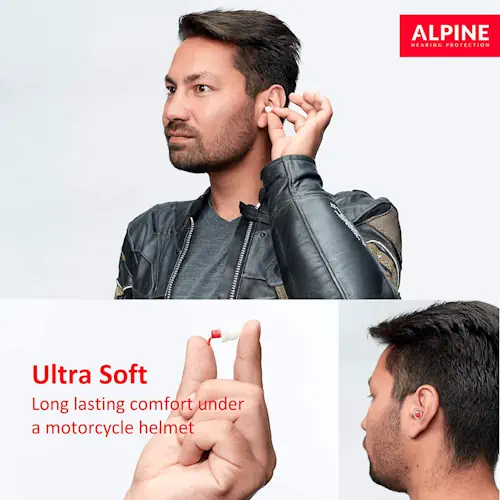
- Extra Toiletries – Carry anti-allergy, anti-inflammatory, pain or regular medications, bug repellent, first-aid kit, soaps, shampoo/conditioner, deodorant, female sanitary items (if applicable), toothbrush, toothpaste, and floss, grooming supplies, a spare washcloth, etc.
Additional Gear:
Tool Kit
Carry a small toolkit for emergency repairs or adjustments. A crescent wrench, small locking pliers, a simple socket set, a small flashlight, a multi-tool with screwdrivers and picks, an Allen wrench set, tire repair kit(s) with inflator and gauge, bungee cords, and a set of jumper cables can all find uses on a long ride.
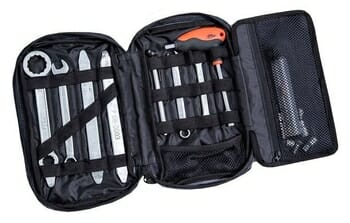
Extra Parts – You may want to carry a few of the common-sized fasteners used on the motorcycle, a roll of duct tape, some electrical wire, baling wire, cable ties, cotter pins, spare replacement bulbs, and extra fuses just in case.
Fuel – Depending on where you’re headed, gas stations may be limited. They make small auxiliary fuel tanks that can be added safely to your equipment to extend your fuel range if you run short.
Cleaning Supplies
Bring a travel-sized simple spray cleaning solution and a microfiber cloth to keep your helmet visor and motorcycle windscreens clean while on the road. Avoid paper towels for cleaning as they can cause micros scratches on your surfaces. Black Dakar 3L Hydration Pack from Amazon.
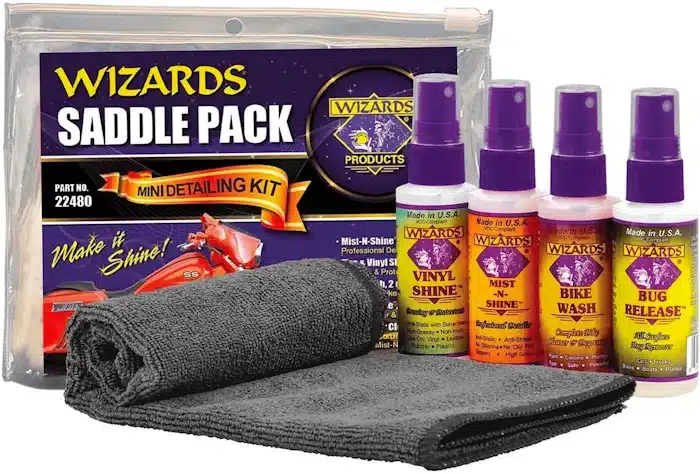
Hydration Packs
Consider wearing a hydration pack or carrying small bottles of water in a tank bag to keep you hydrated during long hours of riding.
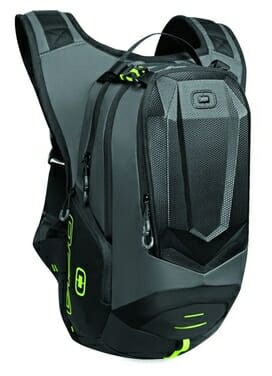
- Snacks – Pack small snacks such as trail mix or protein bars in case you get hungry on the road (or buy them along the way).
- Plastic bags – Plastic bags are a cheap alternative to keep things organized and dry. Use a permanent marker to document the contents of the bag and include the weight so that you can balance the weight on your motorcycle.
- Camping Equipment – If you intend on camping along your long-distance journey, consider packing a flashlight, candles or a lantern, extra batteries, lighter or matches, sleeping bag with air mattress, tent, ground cloth, collapsible chair, eating utensils, a cookstove, and something to cut with (small knife or saw). And most importantly, never forget your toilet paper!
Additional Safety Tips
For You:
- Get plenty of rest – Don’t rely on caffeine to keep you going through the day. Rest up and listen to your body. If you’re tired, pull over.
- Stay healthy by putting in good nutrients – Have a good, balanced meal before and after your ride and drink plenty of water and eat healthy snacks throughout the day. Load up on protein and fiber for breakfast to prepare for your long journey ahead.
- Don’t speed – The adventure you’re on is more of a marathon than a sprint. Losing an hour or so in one day isn’t a big deal, but getting pulled over while speeding will delay you even more.
- Get an early start on your ride each morning – Riding in traffic is unpleasant, so opt to start early to beat the crowds and the heat. If you’re lucky, you’ll be able to catch the sunrise each day!
- Take a lot of breaks – The human mind does best when it stays focused for 45-minutes followed by a 15-minute break. Stop every so often for a certain amount of miles to stretch, relax, eat, and drink. Check out the local scenery; you just might learn some new history at a rest stop with a map. Refresh your energy and relax your body. Do some stretches; the best long distance riders practice yoga, so do these simple stretches at each stop to stay ready to ride.
- Be flexible with your itinerary – Traffic can vary by the hour, as well as the weather. Plan for the unexpected with the right gear for the ride and utilize your GPS to keep you up-to-date on route changes.
For Your Motorcycle:
- Check your oil and fuel levels on your rest stop – It takes an extra minute to check your motorcycle at a stop. Don’t let a leak leave you stranded.
- Carry an extra key – Believe it or not, things do get lost on a long trip, including your motorcycle keys. Be mindful of where you store the spare, as thieves can go rustling through your belongings.
- Perform a thorough T-CLOCS inspection each morning:
- Tires and Wheels
- Controls
- Lights and Electrics
- Oil and Other Fluids
- Chassis
- Stands
- Know your fuel range – Don’t assume each town has a gas station. Be aware of how many miles you can ride on a tank of gasoline, how many gallons your tank should hold at fill up, and how to calculate your miles per gallon for every tank. It will allow you to plan ahead for the next stop and won’t leave you stranded in the middle of nowhere at night.
- A long distance motorcycle ride is a challenge for your mind and body with a massive reward for completion. Planning and preparation is the key to getting off on the right path. Follow these steps for an enjoyable ride and finish strong! While we have provided a lot of information for you, your motorcycle, and the journey itself, we’ve also made a simple checklist to assist you in packing for your adventure ahead. Be sure to download it to help you prepare for the ride of your life. Happy riding!
Motorcycle Parts for All Makes and Models
Everything from basic to high-end. Motorcycle parts that will fit your bike and budget.

